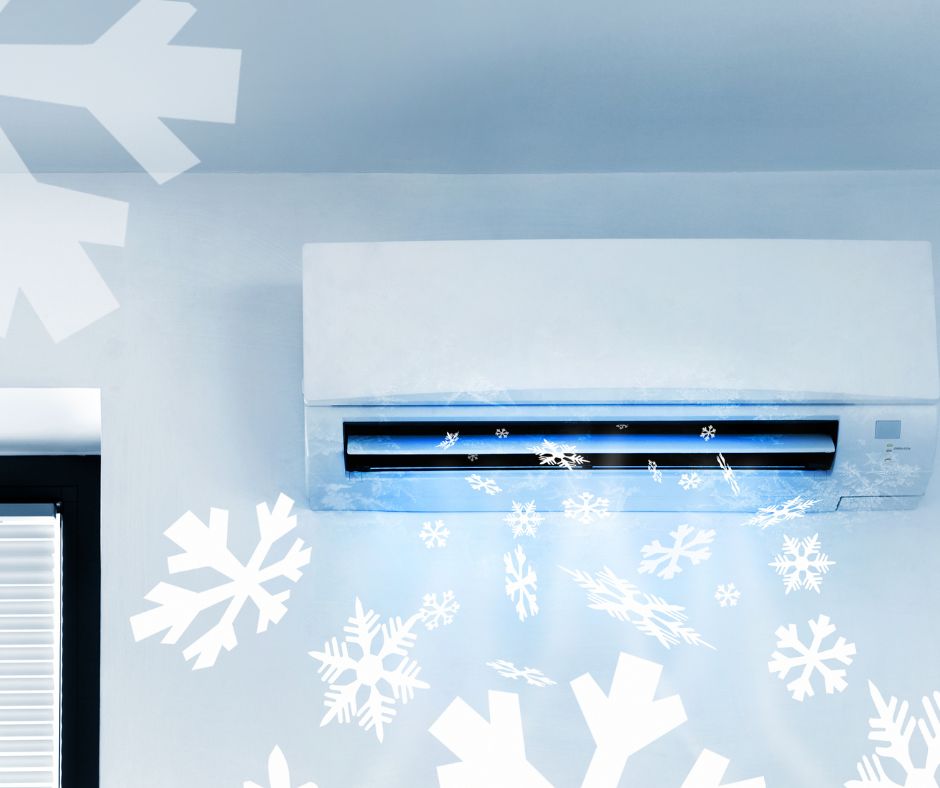Incorporating ultraviolet (UV) light technology into your HVAC system can dramatically enhance indoor air quality while simultaneously ensuring your system remains cleaner and operates more efficiently. UV lights are an effective solution for eliminating harmful germs, mould, and microscopic organisms that pose risks to your health. By targeting and neutralising these dangerous agents before they have a chance to circulate throughout your home, UV lights play a crucial role in fostering a healthier living environment. Moreover, they effectively eliminate unpleasant airborne odours, ensuring that your home consistently feels inviting and fresh-smelling, thereby enhancing overall comfort for you and your family and promoting well-being.
Before making the decision to install UV lights, it is essential to thoroughly assess the potential benefits along with any possible drawbacks. These lights can significantly enhance air quality and even extend the lifespan of your HVAC system. However, it is important to note that they do require regular maintenance and represent an additional financial investment. For families with members experiencing breathing difficulties or for anyone prioritising a cleaner air environment, investing in UV lights could prove to be a wise and beneficial decision for significantly improving your home's air quality.

Unlock the Health Benefits of UV Light Technology for Your HVAC System
Implementing UV lights within HVAC systems offers numerous advantages that can transform indoor air quality. These advanced lights not only purify the air but also enhance the system's efficiency and extend its operational lifespan. For nearly five decades, UV lights have been effectively utilised in hospitals and healthcare facilities across Australia. With significant advancements in UV lamp technology, these systems are now ideal for residential HVAC applications, efficiently neutralising airborne bio-contaminants. Their chemical-free operation ensures a safe installation, making them a smart choice for families seeking to improve air quality without introducing harmful substances into their home.
Elevate Your Home's Air Quality with Cutting-Edge UV Light Technology
UV lights are exceptionally effective at eradicating harmful germs that can accumulate within your HVAC system, including various types of bacteria, viruses, and mould spores, all of which can adversely affect indoor air quality. By specifically targeting and eliminating these microorganisms, UV lights can lead to a marked improvement in your home’s air quality. This enhancement is particularly advantageous for individuals with allergies or respiratory issues, as cleaner air reduces allergens and irritants. As a result, you may notice fewer sneezing, coughing, and other allergy-related symptoms. Furthermore, UV lights are key in preventing mould growth within your HVAC system, effectively eliminating musty odours and the potential health risks associated with mould exposure.
Maximise Your HVAC System's Energy Efficiency with UV Light Technology
Incorporating UV lights into your HVAC system can greatly enhance energy efficiency. These lights play a pivotal role in maintaining the cleanliness of essential components, which are crucial for optimal performance. When dirt, dust, and microorganisms accumulate on system coils, the HVAC must exert more energy to achieve the desired temperature in your home. This unnecessary strain results in increased energy consumption and higher utility bills. However, by integrating UV lights, you ensure that these components remain clean, promoting smoother operation. Additionally, a cleaner system enhances airflow, enabling your HVAC to distribute air evenly throughout your living space, thus improving overall comfort and efficiency.
Moreover, UV lights contribute to the longevity of your HVAC system by keeping it clean. With reduced accumulation on vital components, wear and tear is significantly minimised over time. This means that UV lights can decrease the frequency of cleaning and repairs, ultimately saving you money on service calls and maintenance. A well-maintained system is also less likely to experience unexpected breakdowns, helping you avoid costly emergency repairs and extend the lifespan of your HVAC system. It's important to adhere to the recommended replacement schedule for your UV bulbs, as their effectiveness diminishes over time. Regular bulb replacement is crucial to continue enjoying the benefits of UV technology in your home.
Discover the Different UV Light Solutions Available for Your HVAC System
When considering UV lights for your HVAC system, it's important to note that there are primarily two types available, each designed to target specific areas within your system to enhance air quality and efficiency. These two types offer distinct advantages that can optimise both the heating and cooling performance of your home.
Coil Sterilisation: Keep Your HVAC System Components Pristine
Coil sterilisation UV lights are specifically designed to clean the evaporator coil of your HVAC system. These lights are strategically positioned near the indoor coil, emitting UV light directly onto the coil's surface. This focused approach effectively inhibits mould and bacterial growth on the coil, leading to enhanced efficiency and improved air quality throughout your living spaces. Coil sterilisation lights operate continuously, providing ongoing protection against harmful microbial growth and ensuring your indoor environment remains healthy and clean.
Air Sterilisation: Purify the Air You Breathe Every Day
Air sterilisation UV lights are tailored to target airborne contaminants as they flow through your HVAC system. Typically installed within your ductwork or air handler, these lights purify the air by destroying germs, viruses, and other microorganisms present in the airflow. This purification process can significantly alleviate allergy symptoms and enhance indoor air quality. Air sterilisation lights generally activate when the system's fan operates, ensuring efficient functionality. For optimal performance, professional installation is highly recommended to guarantee proper placement and effectiveness.
Assessing the Effectiveness of HVAC UV Light Systems
The effectiveness of UV lights in HVAC systems can be evaluated based on their ability to eliminate microbes and enhance air quality. A comprehensive assessment includes measuring light intensity, monitoring germ reduction, and analysing airflow patterns within the system to ensure optimal performance.
Understanding Irradiance Measurement for Optimal UV Performance
Irradiance refers to the power of UV light that reaches a surface, which can be accurately measured using a UV meter or radiometer. For HVAC systems, the ideal intensity typically ranges between 50 and 100 microwatts per square centimetre. It is essential to remember that the strength of UV light diminishes rapidly over distance; therefore, placing sensors at various points in your ductwork is crucial for obtaining accurate measurements. Regularly monitoring these readings is vital, as UV bulbs lose intensity over time. Well-designed UV systems can reduce airborne bacteria by 25-30%, significantly enhancing the health of your indoor environment.
Analyzing the Costs and Economic Benefits of UV Lighting in HVAC Systems
Integrating UV light into your HVAC system entails both initial and ongoing costs. While the options available in Australia may be limited, the potential benefits and savings associated with these systems can outweigh the costs. Consider the following:
- Lower energy bills resulting from improved HVAC efficiency
- Reduced repair expenses thanks to cleaner coils and components
- Decreased medical costs arising from enhanced indoor air quality
It is essential to carefully weigh these advantages against the costs based on your unique circumstances. Keep in mind that the effectiveness of UV lights can vary depending on factors such as the specific characteristics of your HVAC system, the size of your home, and the climate conditions in your area.
Weighing the Advantages and Disadvantages of UV Lighting in Your Air Conditioning System
Implementing UV lights into HVAC systems can offer several benefits as well as some drawbacks. Here are some key considerations to keep in mind:
- Energy Consumption: While UV lights do require electricity to operate, they can enhance the overall efficiency of your HVAC system. This improvement might potentially offset the additional energy consumption.
- Reduction of Chemical Usage: The implementation of UV lights may decrease the need for harsh cleaning products in your HVAC system, thereby minimising chemical waste and promoting a healthier environment.
- Disposal of Lamps: Proper disposal is crucial when UV bulbs reach the end of their lifespan. Seek local recycling options to ensure environmentally responsible disposal.
- Enhanced Air Quality: UV lights can significantly improve indoor air quality, potentially leading to reduced frequency in window openings, which helps save on heating and cooling costs.
- Increased System Longevity: UV lights may contribute to a longer lifespan for your unit by maintaining a cleaner HVAC system, resulting in fewer replacements and reduced waste.
Achieve Superior Air Quality with Beyond Heating and Cooling's Innovative Solutions
The continuous advancements in heating and cooling technologies significantly enhance air quality in Melbourne homes. As households transition from traditional gas heating systems to electric ducted heating and cooling, positive changes have already been observed. Newer air conditioning models now include superior filtration systems such as HEPA filters. The growing interest in UV lighting as an additional air purification method is evident. At Beyond Heating and Cooling, we are dedicated to assisting homeowners in exploring this beneficial option for improved air quality.
The Ultraviolet Light Benefits for Your HVAC System appeared first on https://writebuff.com/.
The Article Ultraviolet Light: Enhancing Your HVAC System’s Efficiency Was Found On https://limitsofstrategy.com


I appreciate your insights on incorporating UV light technology into HVAC systems. It’s a topic that’s gaining traction as awareness about indoor air quality grows. As someone who has dealt with allergies for years, I’ve become increasingly aware of how the air we breathe indoors can impact our health. I’ve read studies that suggest that indoor air can be two to five times more polluted than outdoor air, which is quite alarming.
It’s great to hear from someone who has a personal connection to this topic. Many people underestimate the importance of indoor air quality, especially when they start to notice allergies or respiratory issues. The statistic you mentioned about indoor air being two to five times more polluted is indeed eye-opening. Factors like dust, pet dander, and volatile organic compounds can accumulate in our homes without us even realizing it.
I’m glad to hear you found the insights valuable! If you’re interested in exploring more about improving indoor air quality, check out this resource that dives deeper into the benefits of UV light technology in HVAC systems. It’s worth a look for anyone concerned about allergies and health!
https://mannland5.com/quillbot
This topic really resonates with me! I’ve been reading up on ways to improve indoor air quality, especially since I have allergies that flare up during certain seasons. The idea of UV lights in HVAC systems is intriguing; it’s amazing how such a simple addition can have a significant impact on health by reducing allergens and pathogens.
I’m glad to hear that this topic resonates with you. It’s such a relevant issue, especially if you deal with seasonal allergies. Improving indoor air quality can really make a noticeable difference in how you feel day to day.
I definitely agree with you on that. Seasonal allergies can really take a toll on daily life, can’t they? I’ve noticed that when I invest a bit more focus on improving indoor air quality—like using HEPA filters and keeping windows closed during high pollen seasons—it really does help me feel better overall.
I can definitely relate to that struggle with seasonal allergies. It’s interesting how something like air quality can have such a big impact on how we feel day to day. I’ve tried a few different things too, like using air purifiers and keeping our living space as dust-free as possible. It makes a noticeable difference.
Your exploration of UV light technology in HVAC systems really highlights an important yet often overlooked aspect of indoor air quality. While I recognize the potential benefits you’ve described, I can’t help but wonder about the broader implications of relying heavily on technology for air purification.
You’ve raised some significant points about the advantages of integrating UV light technology into HVAC systems. The emphasis on improving indoor air quality and combating microorganisms is especially relevant in today’s context, where air quality has become a crucial aspect of public health discussions.